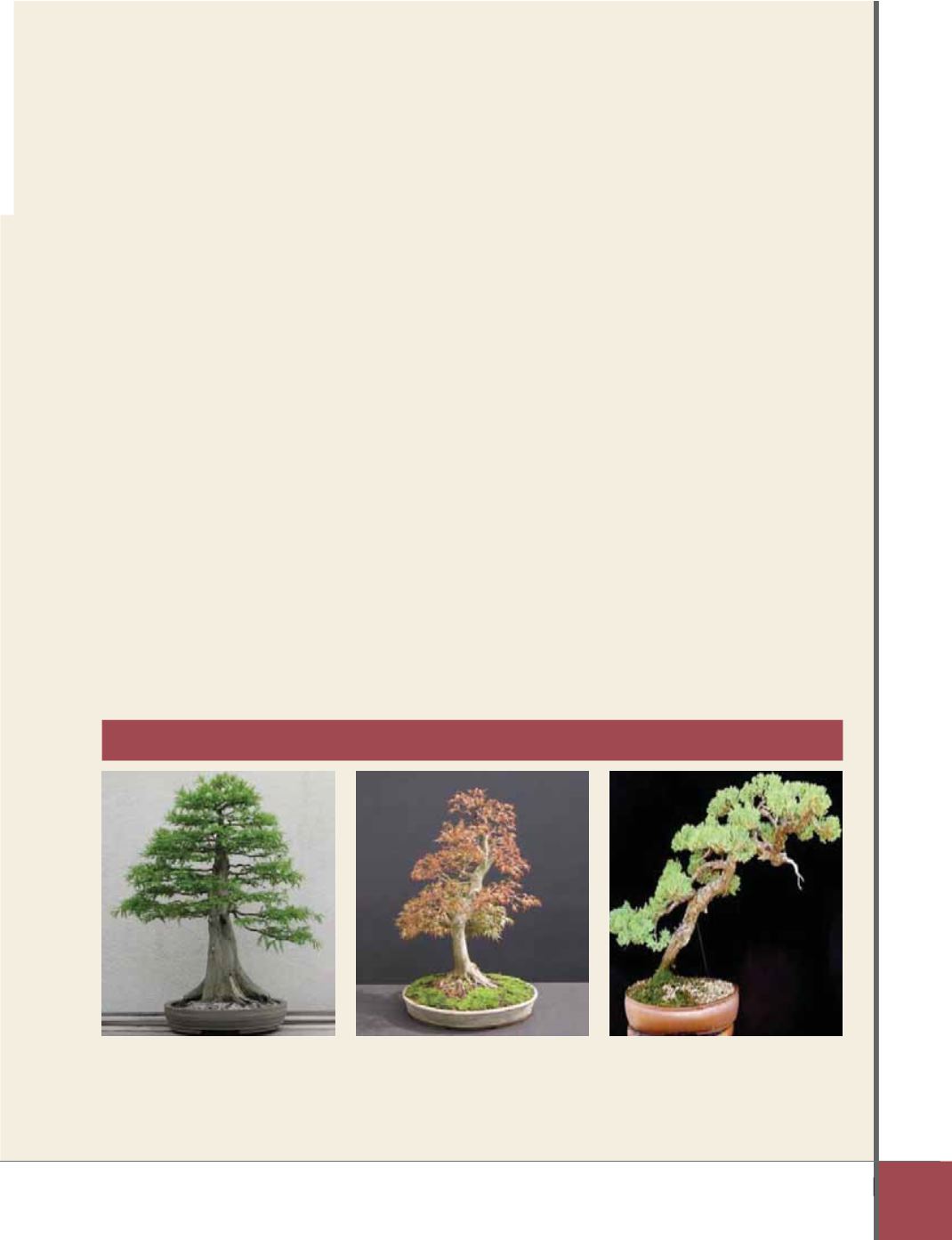

When does a Bonsai need to be repotted?
To grow a proper Bonsai and create that amazing
miniature tree effect takes many years. Regular repotting,
feeding and watering are essential.The idea is to grow the
plant well and train it regularly. Repotting means that the
plant must be removed from the pot, its roots teased open
and most of the finer roots removed.The ground rule is to
not only keep the plant small but allow it to grow more
healthy, vigorous roots in the same pot. In the year after
repotting, the plant will grow well and slow down only
when it runs out of food or when the pot is root bound,
preventing new root formation. The only time a Bonsai is
planted in a bigger pot is if its size is out of proportion to
the existing pot or for reshaping. Many Bonsai are grown
in larger containers or even in the ground for some years
till the desired shape is reached and only then, put into a
Bonsai pot. Plants can be removed from Bonsai pots and
placed into the ground for a year or two to thicken the
stems.
Which are the best plants for Bonsai?
The best plants are those that are easy to look after, happy
to be trimmed, have their roots aggressively cut and have
small leaves. Most conifers and pines make great Bonsai
due to their needle-like leaves. Ficus are probably the best
for beginners to start with, as they are almost fail safe and
can also survive short dry-out periods.
How does defoliation help?
This is my personal favourite. To reduce the leaf size to
match your tree, July/August are the best months to
defoliate, leaving enough time for new leaf growth and
prepare for the winter season. Defoliate after the new
spring growth has hardened. Conifers/pines should not be
touched though.
What is the importance of Nebari?
A very important aspect of a Bonsai is its Nebari or the
visible surface roots that provide visual balance to a tree.
Creating a Nebari can be done using two methods; by
regularly pruning the downward growing roots so that they
start growing sideways and the more difficult air-layering,
which I have not tried. A shortcut would be to slowly
expose the roots by watering, as time goes by.
What are the different styles of Bonsai?
This is a vast subject in itself as both the Chinese and
Japanese have their own particular styles. The most
common are: formal upright, informal upright, slanting,
semi-cascade, cascade, raft, literati and group/forest. Less
common forms include windswept, weeping, split-trunk,
and driftwood styles. These terms are not mutually
exclusive, and a single Bonsai specimen can exhibit more
than one style characteristic, the common practice being
to describe it by the most dominant or striking
characteristic.
A frequently used set of styles describes the orientation of
the Bonsai’s main trunk. Different terms are used for a tree
with its apex directly over the center of the trunk's entry
into the soil; slightly to the side of that center; deeply
inclined to one side; and inclined below the point at which
the trunk of the Bonsai enters the soil.
fàçÄxá Éy UÉÇát|
Formal upright or
chokkan
style trees
have a straight, upright, tapering trunk.
Branches progress regularly from the
thickest and broadest at the bottom, to
the finest and shortest at the top.
Informal upright or
moyogi
trees
incorporate visible curves in trunk and
branches, but the apex is located
directly above the trunk's entry into
the soil line.
In the slant-style or
shakan
Bonsai,
the trunk emerges from the soil at an
angle, and the apex of the tree is
located to the left or right of the root
base.
July 2016 51
















